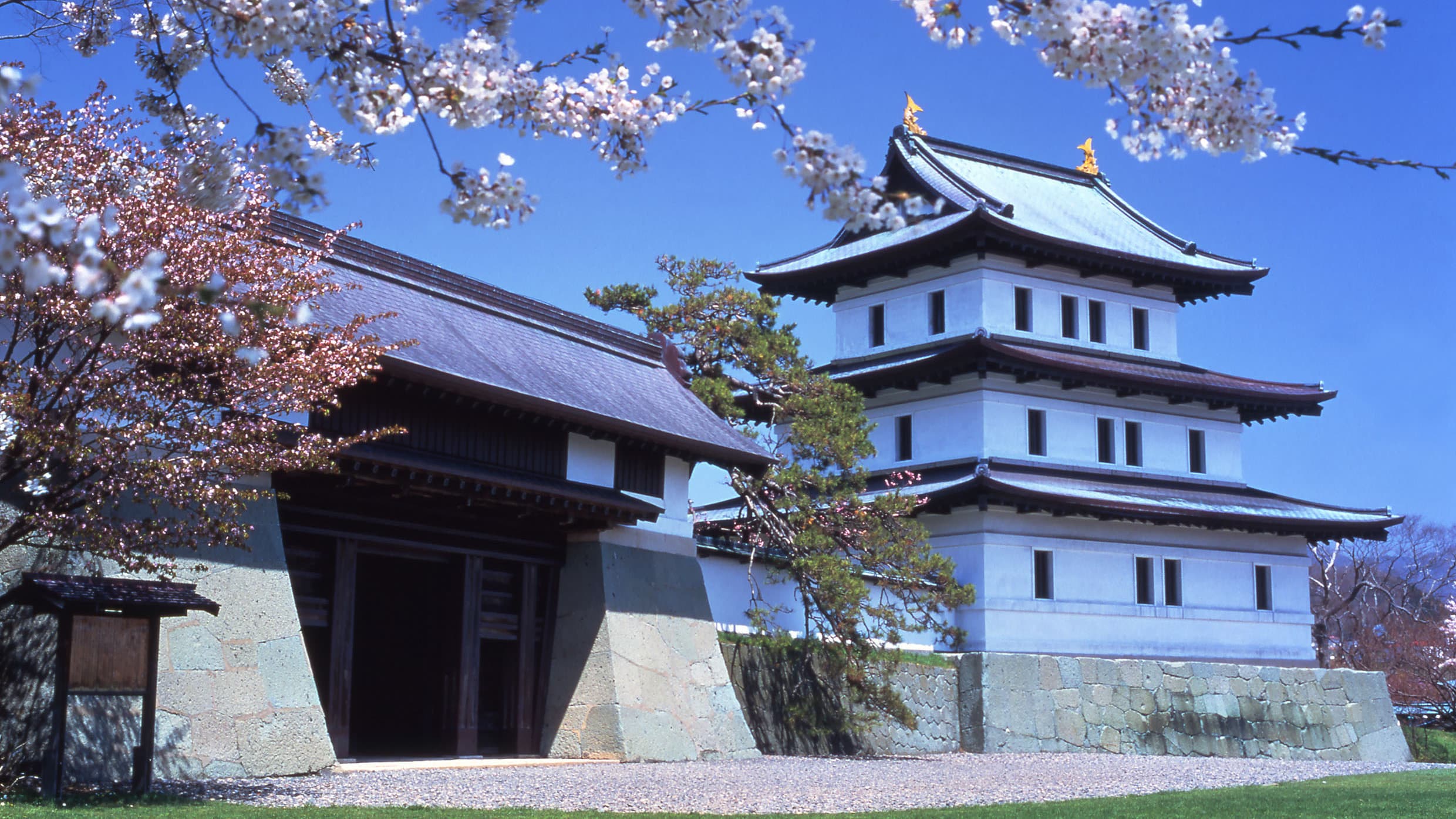
Matsumae Castle
松前城- Kikonai StationDōnan Isaribi lineKaikyō Line
- 92 minutes bus drive to Matsushiro
- Walk 7 minutes
Nestled in the coastal town of Matsumae in Hokkaido, Matsumae Castle stands as a remarkable testament to Japan's feudal heritage. Known officially as Fukuyama Castle, this fortress holds the unique distinction of being Japan's northernmost traditional castle and the very last Japanese-style castle ever constructed.
A Castle Born from Strategic Necessity
The story of Matsumae Castle begins in the mid-19th century when the Tokugawa shogunate recognized the critical importance of defending Japan's northern frontier. Concerned about increasing foreign pressure, particularly from Russia, the government commissioned the construction of this fortress through special decree. The project was entrusted to Ichikawa Ichigaku, a military strategist from the Takasaki Domain, who designed the castle according to traditional Japanese architectural principles.
Construction commenced in 1850 (Kaei 3) and reached completion in 1854 (Ansei 1), making it the final castle built in the classic Japanese style. This timing places its construction during one of the most tumultuous periods in Japanese history, as the country grappled with the end of its centuries-long isolation policy.
Architectural Heritage and Tragic Loss
Upon completion, Matsumae Castle featured the classic elements of Japanese castle architecture, including a three-story wooden keep, the main gate (Honmaru Gomon), and eastern walls. These structures represented the pinnacle of traditional Japanese fortress design, combining defensive functionality with aesthetic beauty.
The castle's historical significance was formally recognized in 1941 when the three-story wooden keep, main gate, and eastern walls received designation as National Treasures. However, this prestigious status would prove tragically short-lived.
On June 5, 1949, disaster struck when sparks from a fire at the town hall spread to the castle grounds. The flames consumed the National Treasure wooden keep, destroying centuries of craftsmanship and an irreplaceable piece of Japanese architectural heritage. Only the main gate survived this devastating fire and continues to stand today as the sole remaining original structure from the Edo period castle, now designated as an Important Cultural Property.
Phoenix Rising: The Reconstruction Era
The loss of the castle keep galvanized communities across Hokkaido. A castle reconstruction committee launched an island-wide campaign to rebuild this important cultural landmark. The reconstruction effort culminated in 1960 when a new reinforced concrete keep was completed, designed by Professor Minoru Ooka from Yokohama National University's Faculty of Engineering.
Unlike the original wooden structure, this modern reconstruction was purpose-built to serve as a museum. The following year, additional facilities were completed, and the reconstructed keep officially opened as the Matsumae Castle Museum, ensuring that the castle's historical legacy would continue to educate and inspire future generations.
The Museum Experience
Today's Matsumae Castle Museum occupies four floors, including one basement level and three above-ground floors. Visitors should note that the building is accessible only by stairs, so mobility considerations should be planned accordingly.
The museum's collection offers fascinating insights into the region's history and the castle's role in Japan's northern defense strategy. Among the notable exhibits is a reproduction of the Matsumae Folding Screen, originally created during the Horyaku period (1751-1763) by local artist Kodama Teiryo. This artwork beautifully captures autumn scenes of the castle town during the Edo period, providing visitors with a glimpse into daily life around the fortress centuries ago.
The museum entrance features calligraphy by Kaneko Otei, a renowned calligrapher born in Matsumae, whose brushwork welcomes visitors with the characters for "Matsumae Castle."
Seasonal Splendor and Scenic Views
Matsumae Castle's setting offers spectacular views throughout the year, but spring brings particularly breathtaking scenery. The contrast between the reconstructed castle keep and the surrounding cherry blossoms creates a stunning visual spectacle that attracts photographers and nature lovers from across Japan.
From the museum and the observation deck called Kantodai, visitors can enjoy panoramic views of the Tsugaru Strait, the body of water separating Hokkaido from Honshu. On clear days, the vista extends across the strait, offering glimpses of Aomori Prefecture on the main island.
At Hey Japan!, we strive to keep the places listed on our website as current as possible. However, it is important to note that location owners or management may make changes to their plans, including canceling events, altering opening times, or modifying admission requirements, without prior notice. To ensure that you have the most accurate information, we recommend checking official websites before visiting any location.
Last Updated:













